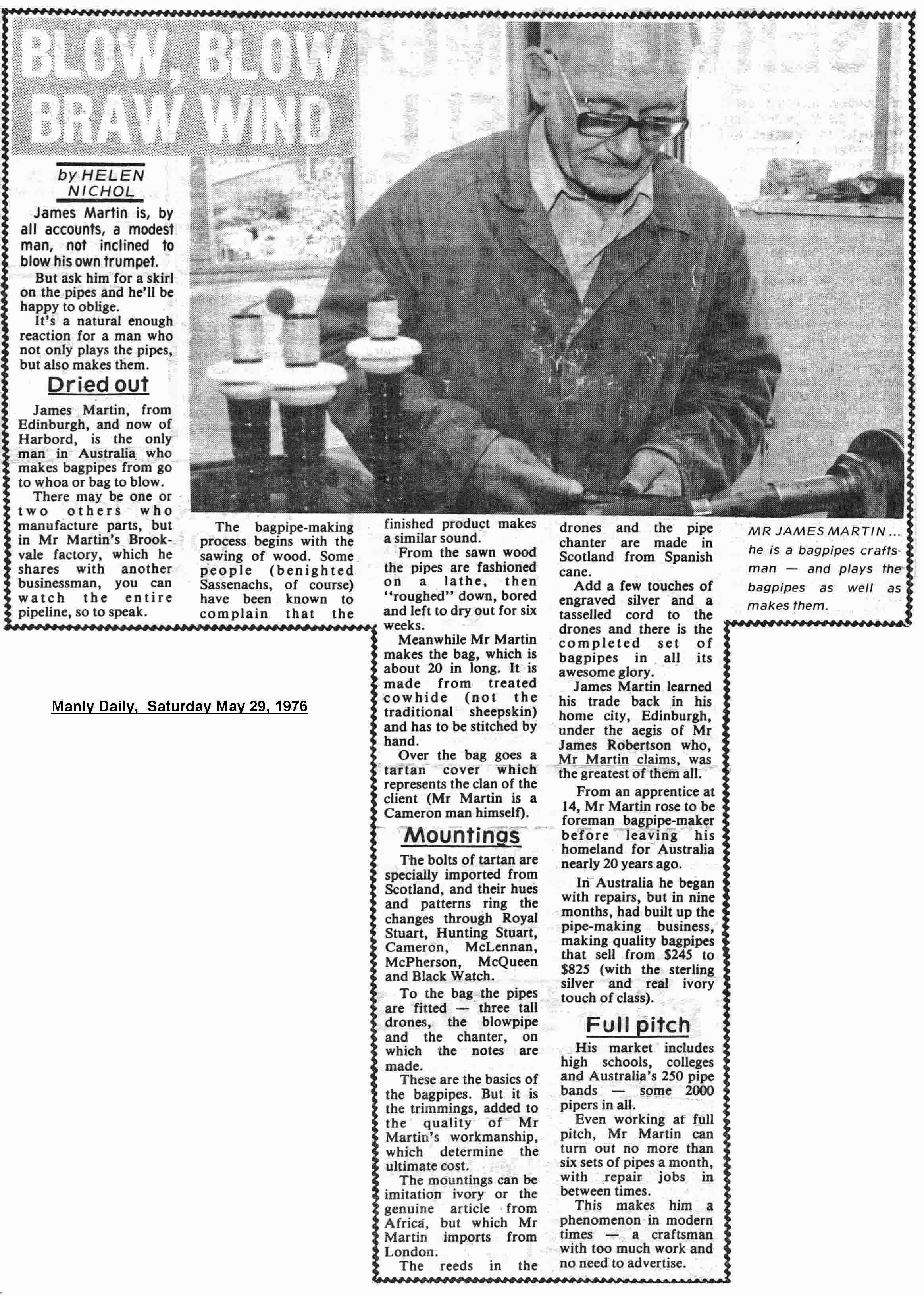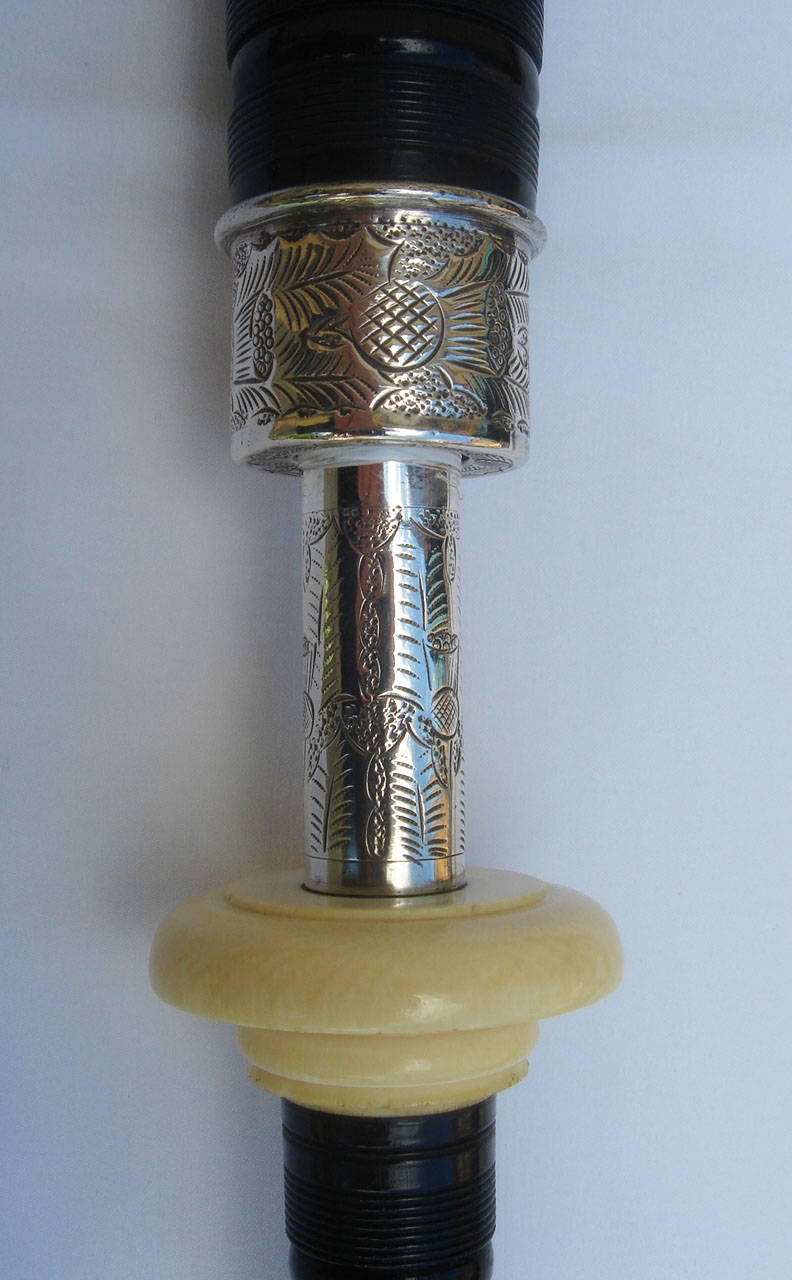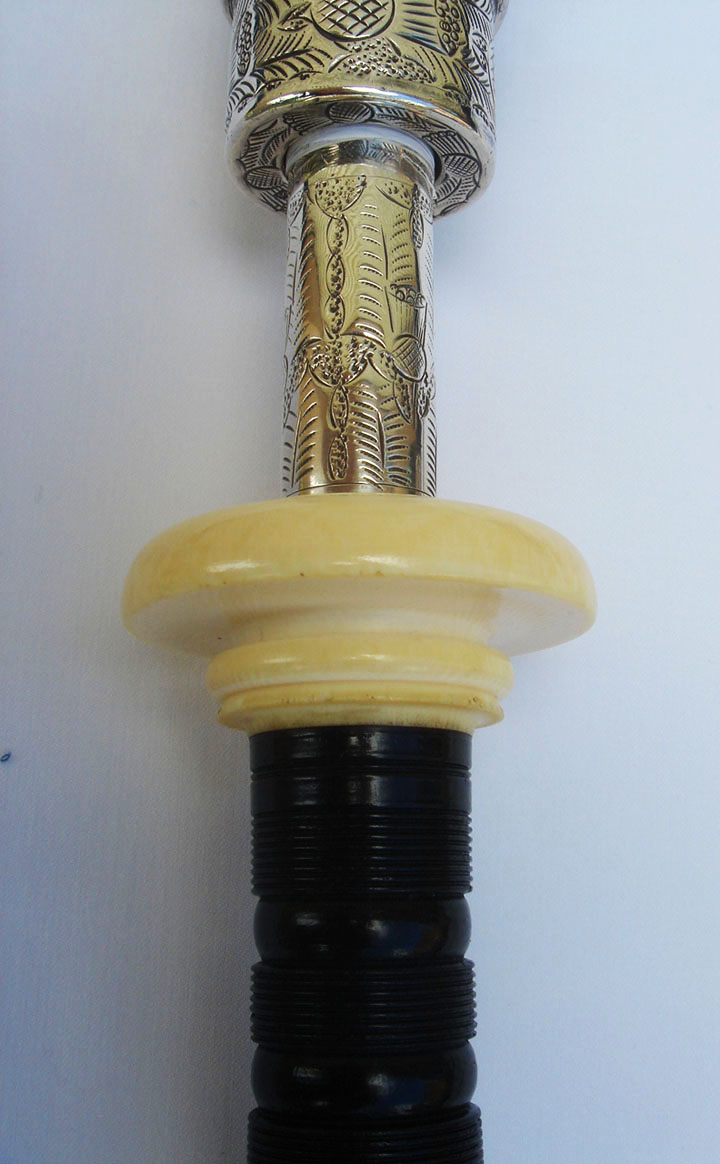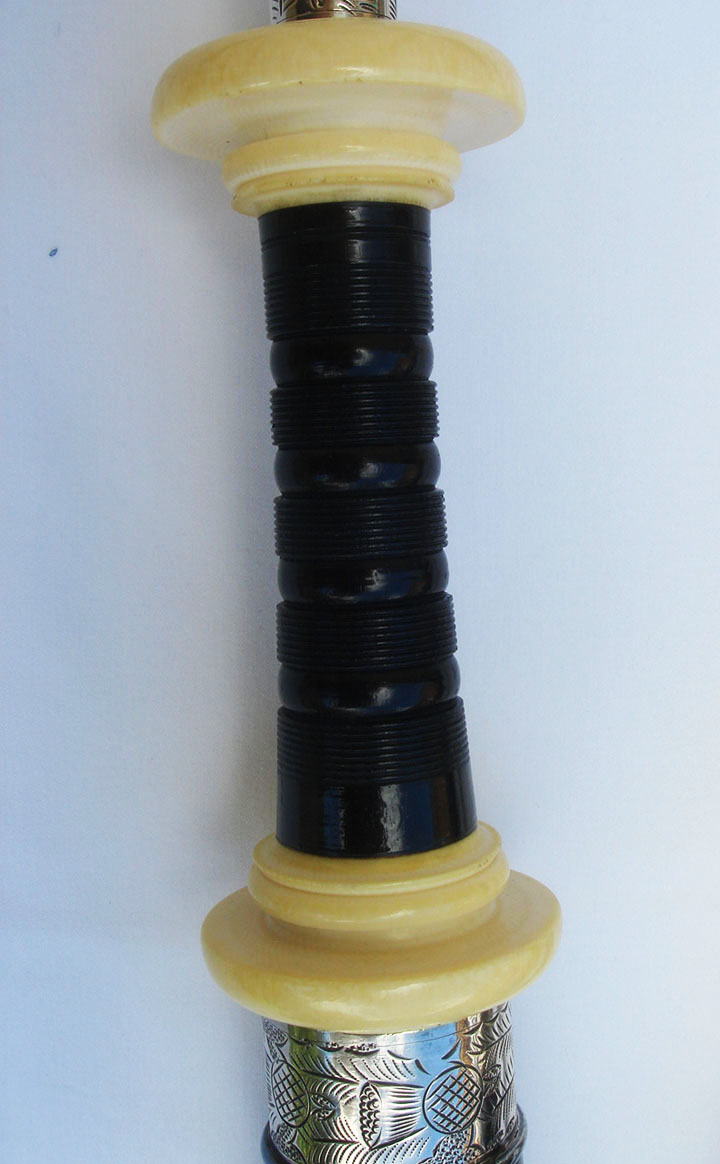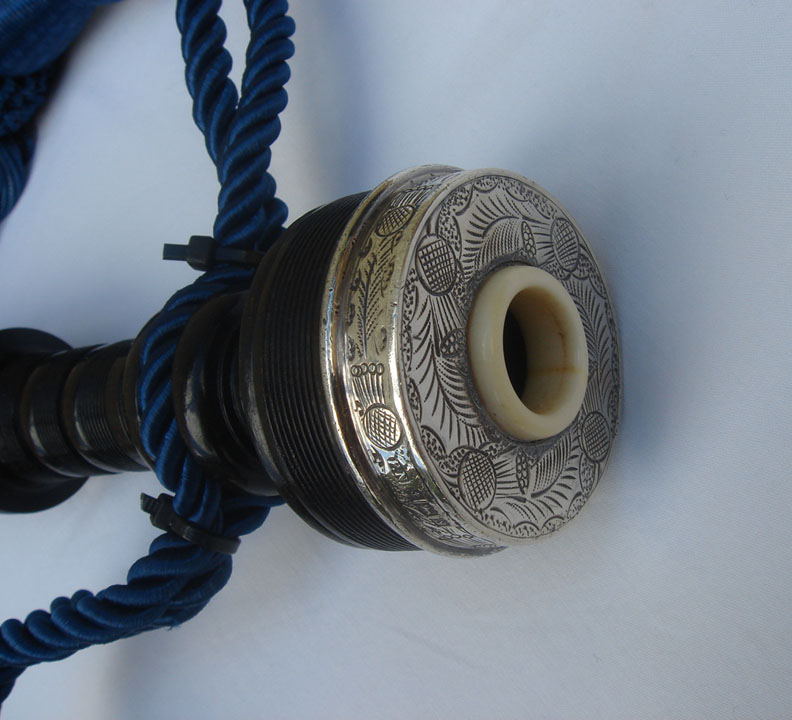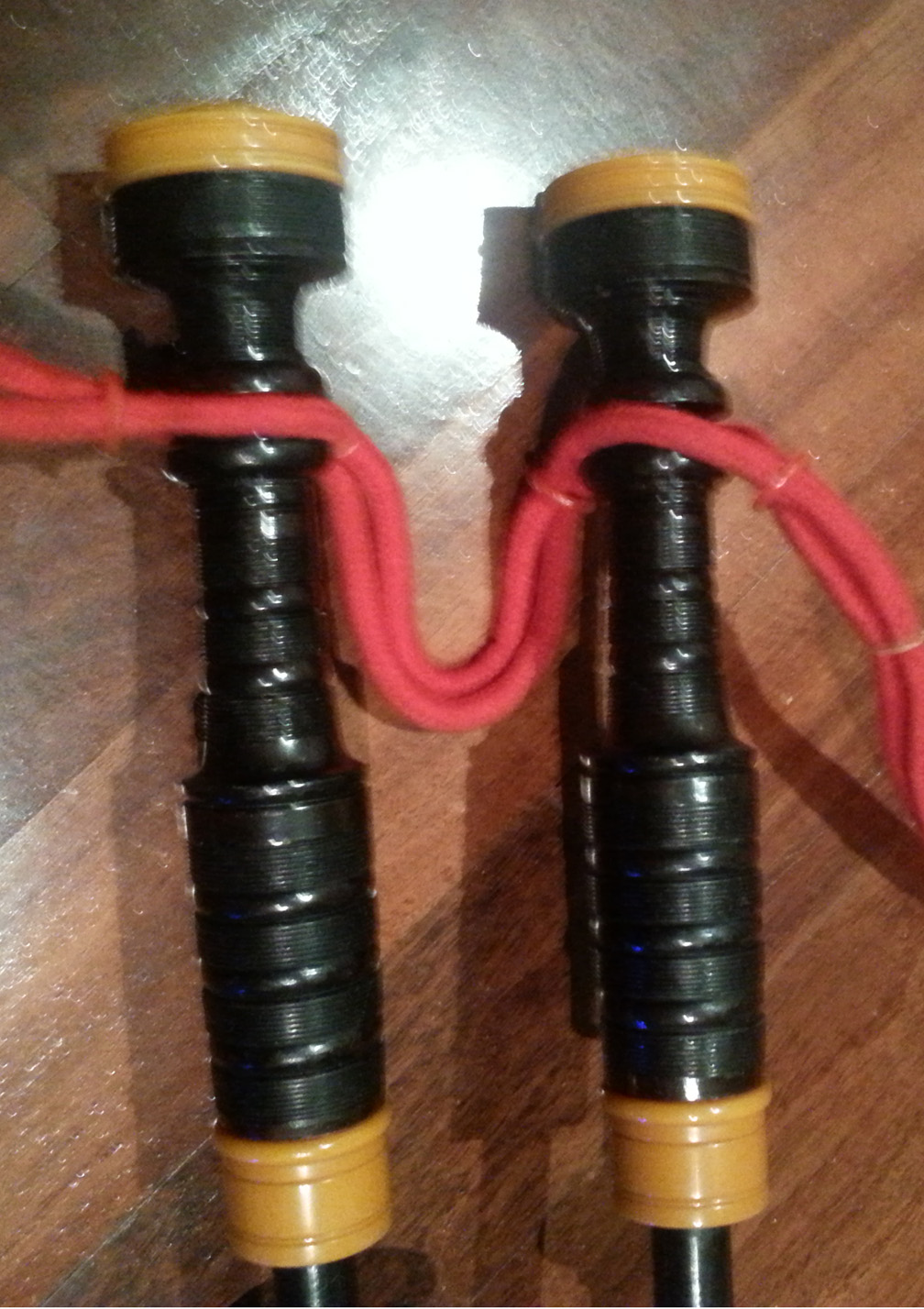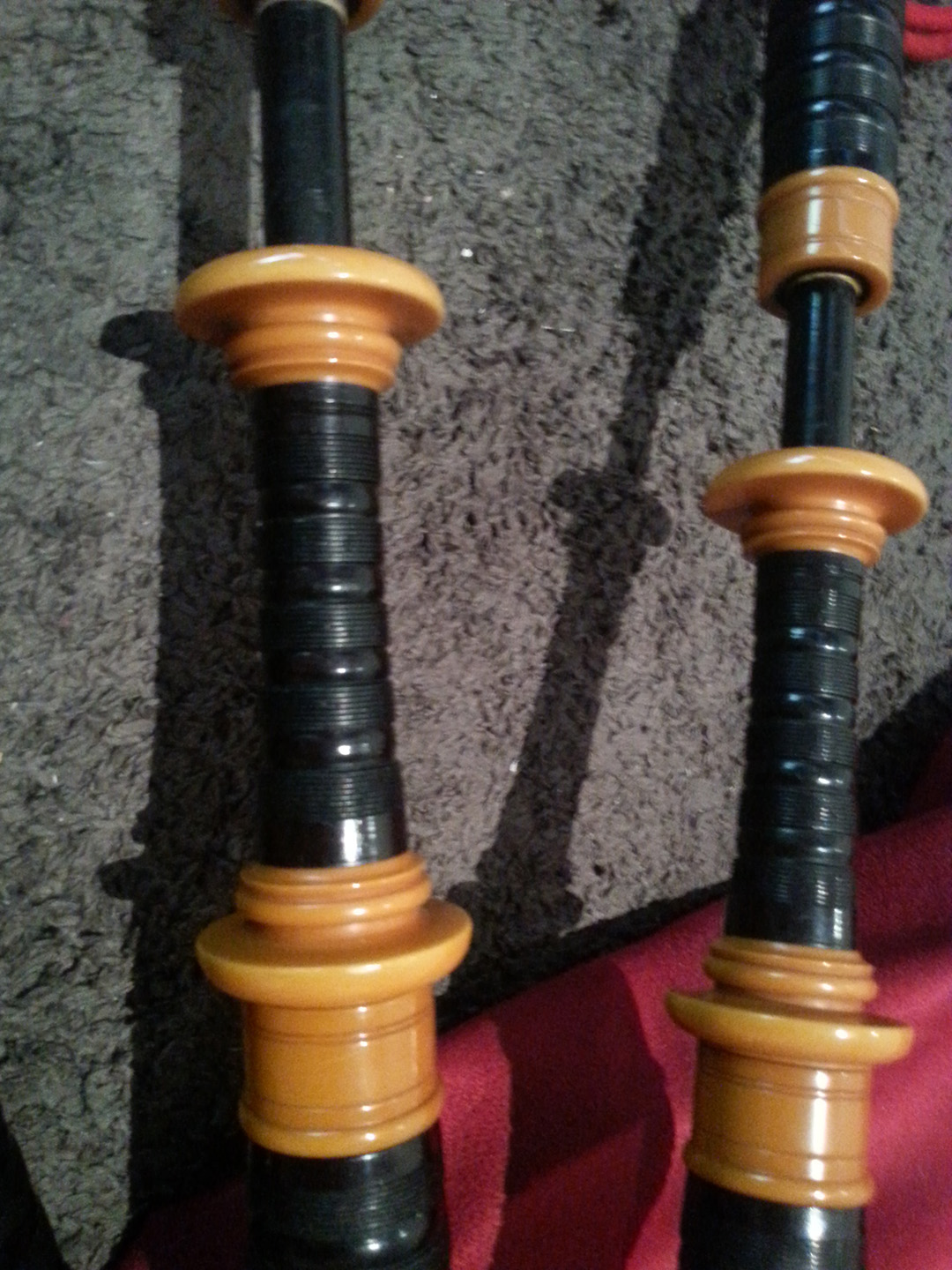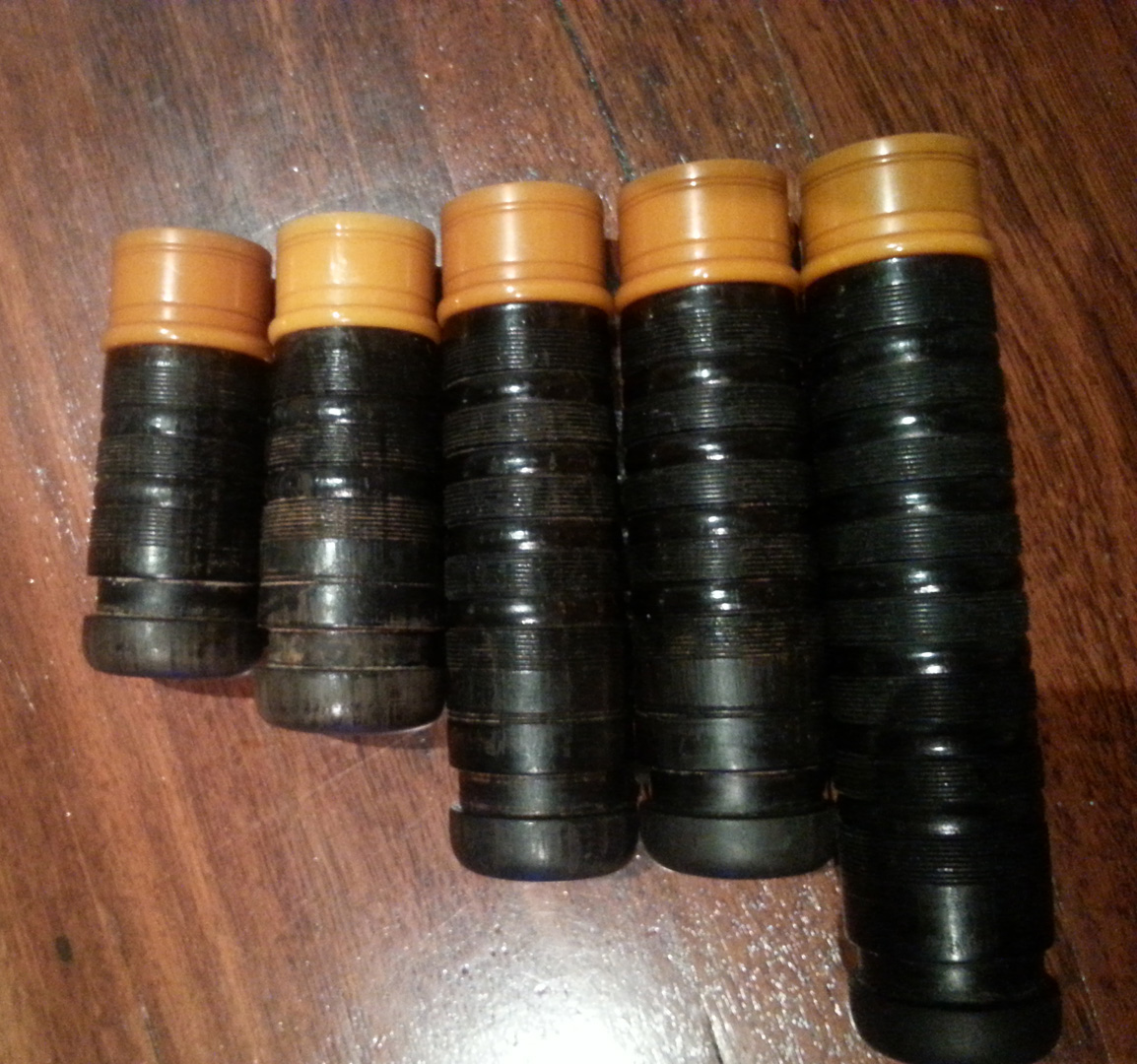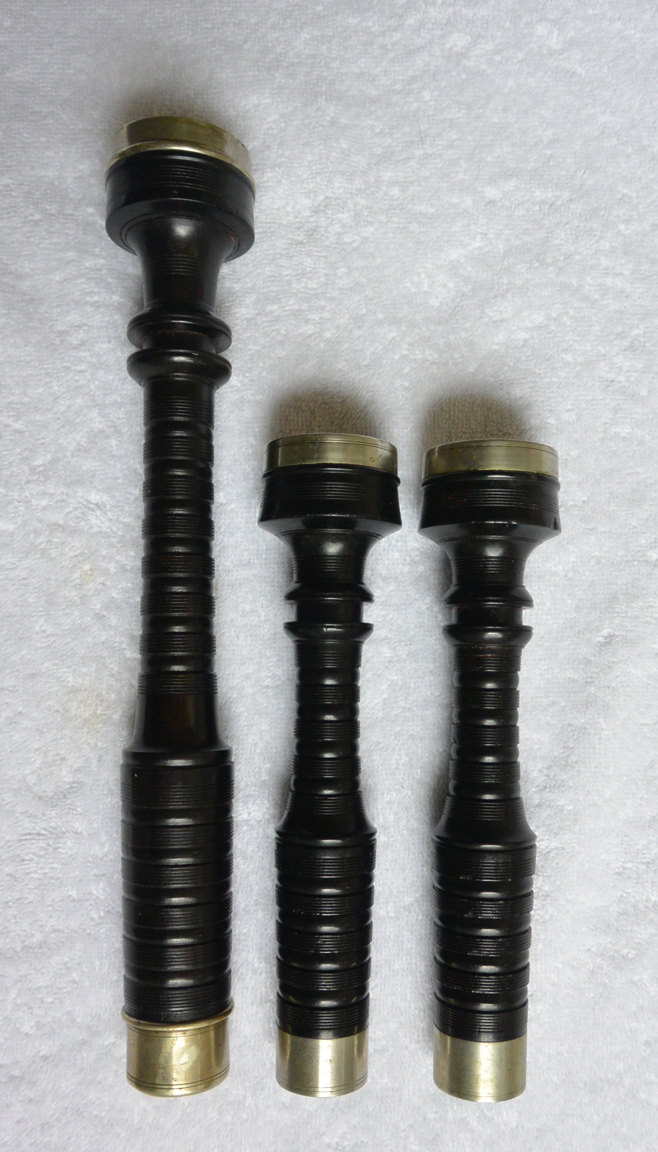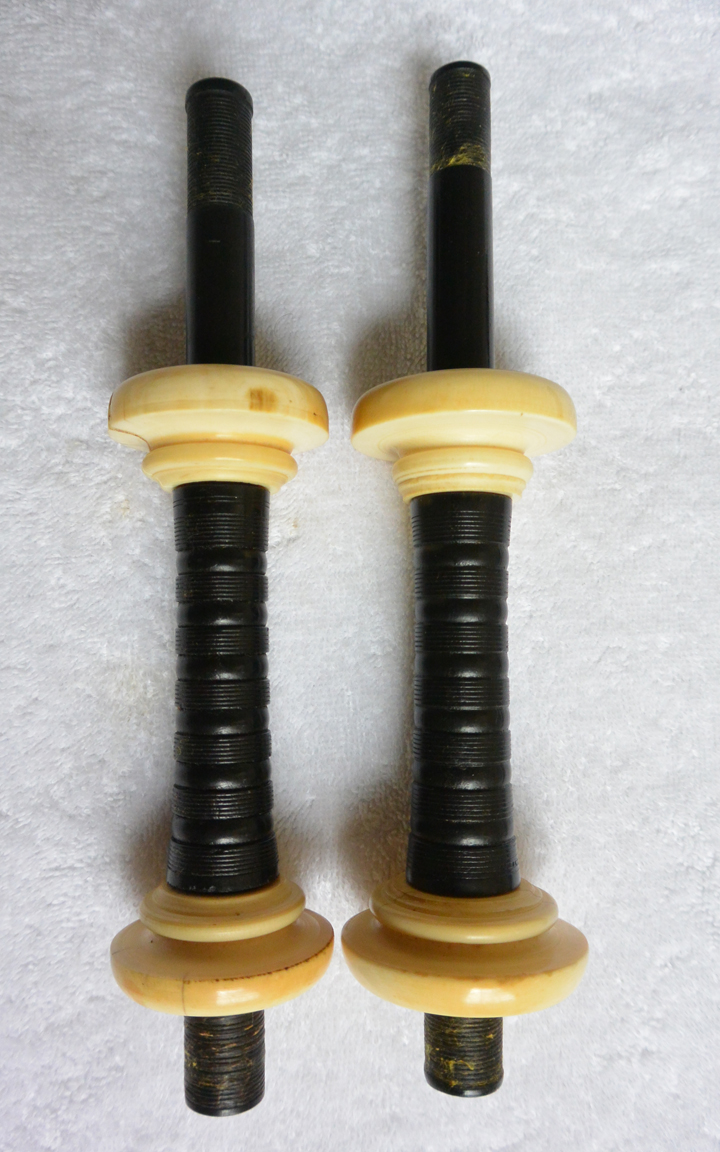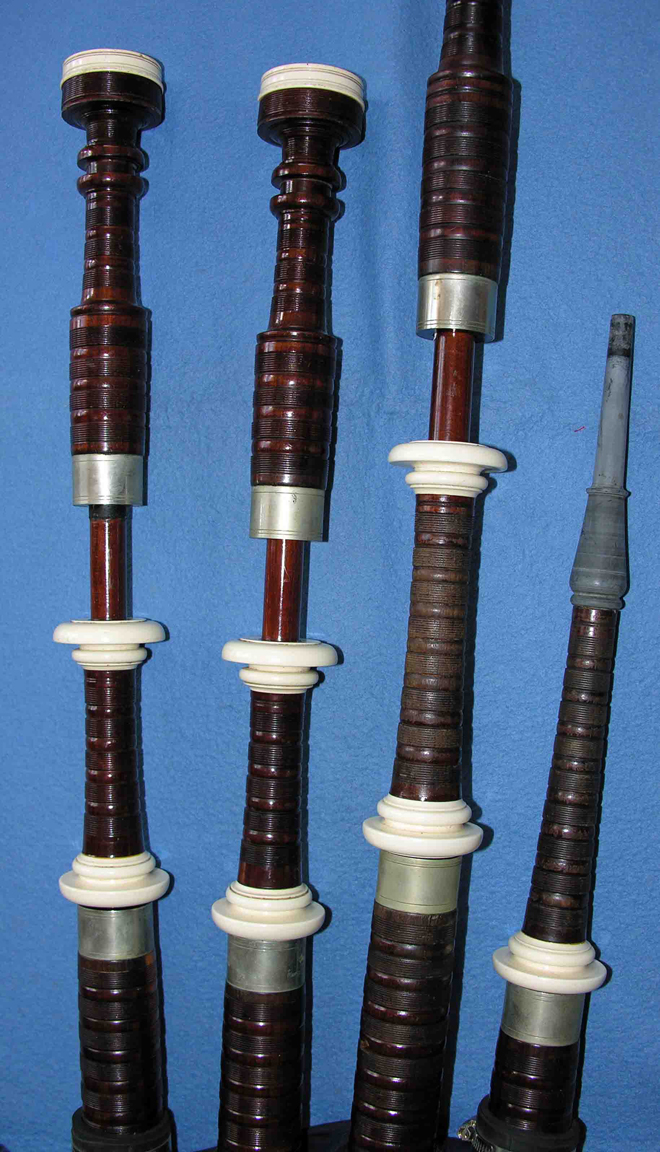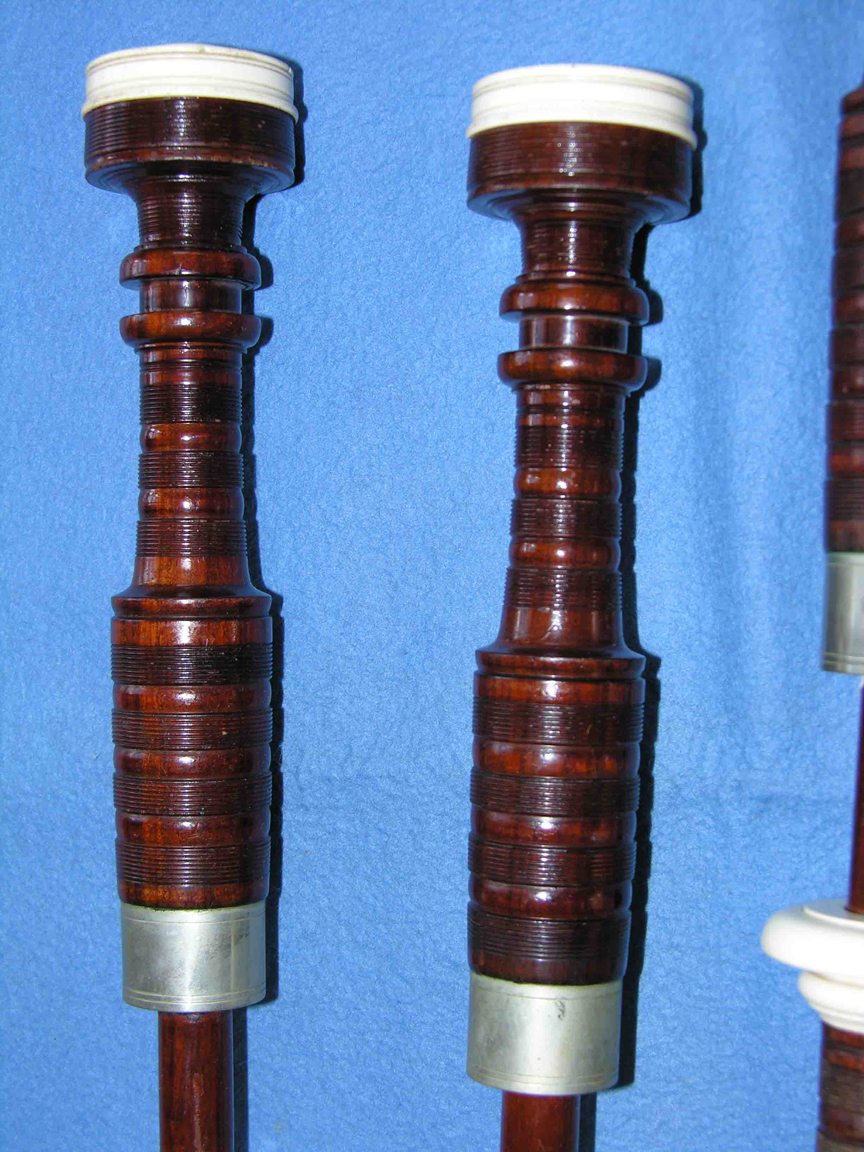The following was sent to me, along with these images.
James Martin was apprenticed to James Robertson, and was eventually his foreman. He came out to Sydney in the late 1950s and brought his tools with him. He used blackwood and ivory and that stopped in 1974. He then experimented with other mounts and used catalin and a white material. He stopped in the 1980's. His early pipes are described as very good, but later as his tools wore, the bored decreased in size, and his latter pipes were not as good. (he was described as a tight arsed bastard who would not pay for new tools), but a very good pipe maker all the same.
I will see what I can find out. He had quite a good reputation. The pipes play very well and the girl who now playes them was quite a good competitor in the intermedaite grades. I do not know who did the silver, I suspect it was probably imported. Hall marking is PN and Birmingham markings of anchor and Lion.
A few pics for your museum.
This is a set of James Martin bagpipes made in New South Wales Australia back in the 1960's.
They have quite distinctive projection mounts.
This set was a prize at the Australian Solo championships in the late 50's early 60'e won by PM Dickie Hepburn formerley of the Bonhill Parish Pipe Band whp won many grade 1 prizes in Scotland, including the Edinburgh Open Championships and second at the Worlds, I believe.
James Martin was apprenticed to James Robertson, and was eventually his foreman. He came out to Sydney in the late 1950s and brought his tools with him. He used blackwood and ivory and that stopped in 1974. He then experimented with other mounts and used catalin and a white material. He stopped in the 1980's. His early pipes are described as very good, but later as his tools wore, the bored decreased in size, and his latter pipes were not as good. (he was described as a tight arsed bastard who would not pay for new tools), but a very good pipe maker all the same.
I will see what I can find out. He had quite a good reputation. The pipes play very well and the girl who now playes them was quite a good competitor in the intermedaite grades. I do not know who did the silver, I suspect it was probably imported. Hall marking is PN and Birmingham markings of anchor and Lion.
A few pics for your museum.
This is a set of James Martin bagpipes made in New South Wales Australia back in the 1960's.
They have quite distinctive projection mounts.
This set was a prize at the Australian Solo championships in the late 50's early 60'e won by PM Dickie Hepburn formerley of the Bonhill Parish Pipe Band whp won many grade 1 prizes in Scotland, including the Edinburgh Open Championships and second at the Worlds, I believe.
Here is another example of Martin's work in catalin. This was pretty easy to identify given the distinctive mounts and very tight TPI combing. The profile is similar to pipes he would have made for James Robertson however perhaps not quite as robust, either in wood or in the projecting mounts. The stocks show distinctive similarities, but again, perhaps not quite as hefty as Robertson.
This bagpipe surfaced in Australia but was said to have been purchased in Scotland.
This bagpipe surfaced in Australia but was said to have been purchased in Scotland.
It's impossible not to see "Robertson" in the profiles and detail of Martin bagpipes. Both Martin and George Kilgour carried on the tradition of excellence that Robertson turners were noted for. It also helps us to understand how turners took certain aspects of the bagpipe they had been making with them, even half way around the world.
James Martin

